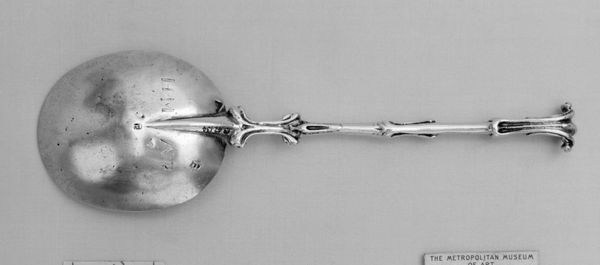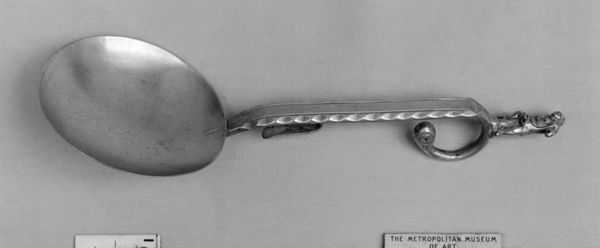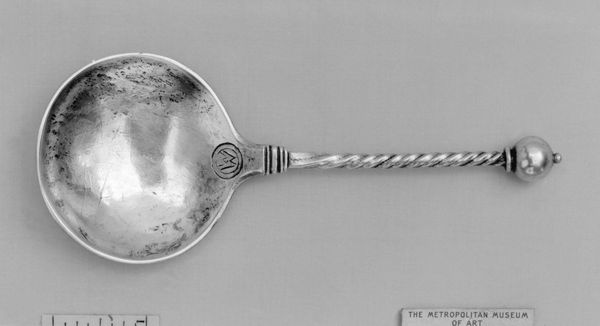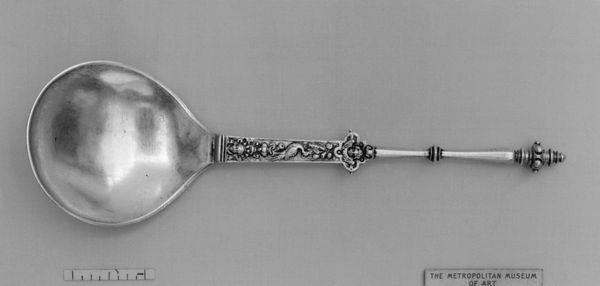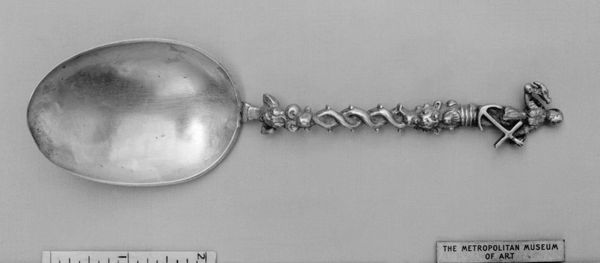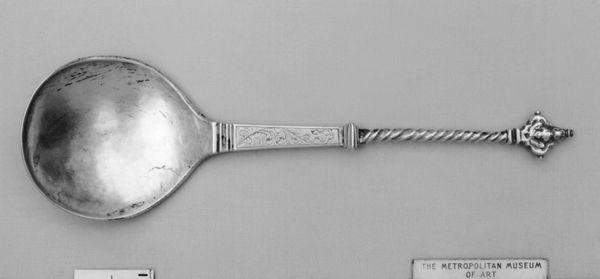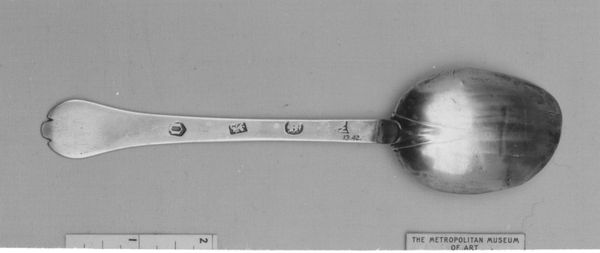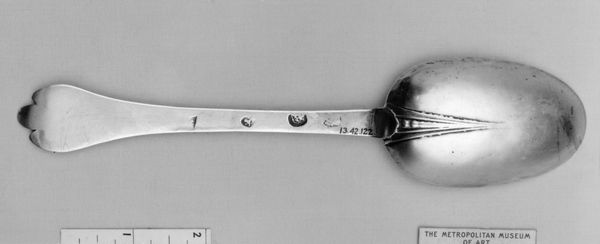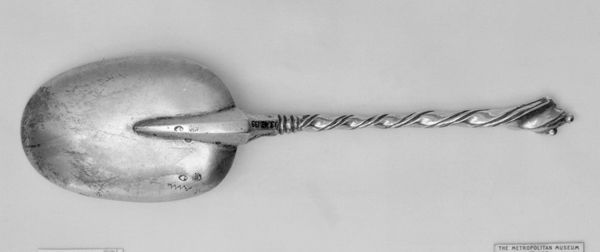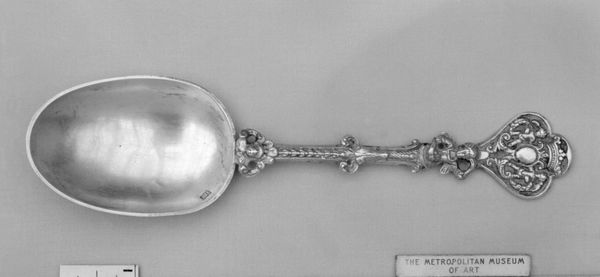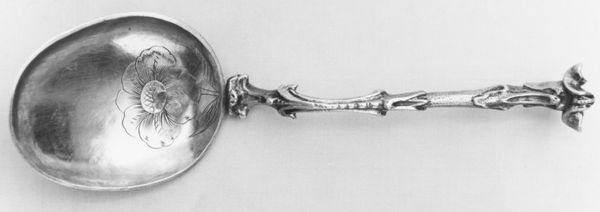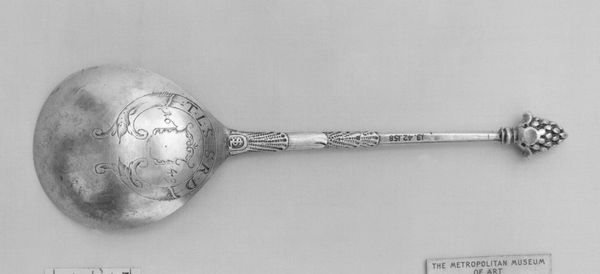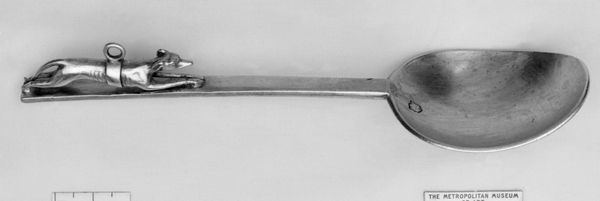
silver, metal, metalwork-silver, sculpture
#
silver
#
baroque
#
metal
#
metalwork-silver
#
sculpture
#
decorative-art
Dimensions: Overall: 6 9/16 × 1 13/16 in. (16.7 × 4.6 cm)
Copyright: Public Domain
Editor: Here we have a Baroque silver spoon made in 1674. It is currently located at the Metropolitan Museum of Art. It has a really elegant spiral handle. How would you interpret such a seemingly everyday object? Curator: Well, looking at a spoon like this through a historical lens, it becomes much more than just a tool for eating. Think about the rise of silverwork in the 17th century and its connection to power. Who owned objects like this? Editor: Probably someone wealthy. It doesn't exactly scream "mass produced". Curator: Exactly. This spoon is a symbol of status. The Baroque style, with its ornamentation, tells us about the tastes of the elite. But also, consider where the silver came from. Editor: Was silver mining a big industry back then? Curator: A brutal one. Much of it was extracted through forced labor in colonial mines. The artistry and beauty of the spoon mask a dark side of exploitation and unequal distribution of resources. The very act of dining transforms into a display of power and control. Does that make you see it differently? Editor: Definitely. The twist of the handle is much more sinister now, knowing the context. Is there a record of who owned it originally? Curator: Unfortunately, many times the provenance for functional objects isn't well documented. However, museums collect such works as cultural artifacts reflecting specific period aesthetics and social stratification of those eras. Editor: It’s fascinating to realize how everyday objects carry such heavy historical weight. Thank you for enlightening me. Curator: My pleasure! Considering art’s cultural context can transform how we understand not only the artwork but history itself.
Comments
No comments
Be the first to comment and join the conversation on the ultimate creative platform.
